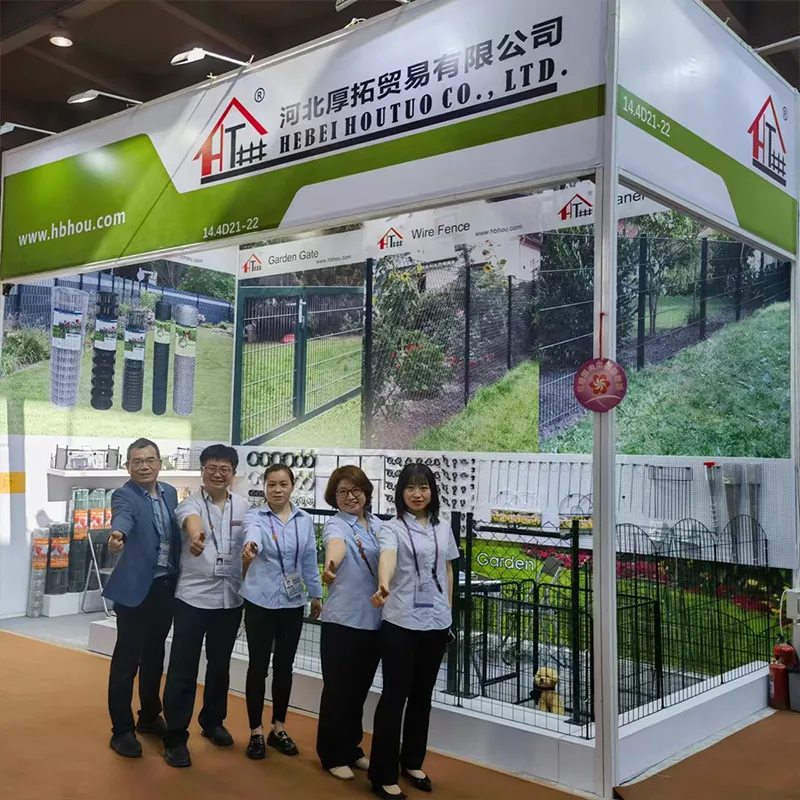Understanding Metal U Channel Posts Applications and Benefits
Metal U channel posts are structural components widely used across various industries due to their versatility, strength, and durability. Formed into a U shape, these channels are typically made from materials such as steel or aluminum, which provide excellent mechanical properties. This article will explore the different applications of metal U channel posts, their benefits, and some considerations for their use.
Characteristics of Metal U Channel Posts
Metal U channel posts are designed with two parallel flanges and a connecting web, creating a channel that provides structural support. The U shape allows for efficient load distribution, which makes them particularly effective in various construction applications. They come in different sizes and thicknesses, catering to specific engineering needs. Additionally, channels can be pre-galvanized or treated with protective coatings to enhance their corrosion resistance, prolonging their service life.
Applications of Metal U Channel Posts
1. Construction and Framework One of the primary uses of metal U channel posts is in the construction industry, where they are used as part of framing systems. They serve as vertical supports in walls, aiding in load-bearing capacities and structural integrity. Their strength makes them ideal for commercial as well as residential buildings.
2. Fencing and Signage U channel posts are also a popular choice for fencing applications. They provide a sturdy framework for mounting fences, gates, and panels. In addition, they are used to support signs in various settings, including highways and commercial properties, ensuring that signage remains stable and visible.
3. Manufacturing and Production In manufacturing environments, U channel posts are often employed in the construction of machinery supports, workstations, and conveyor systems. Their modular design allows for easy assembly and reconfiguration, accommodating changing production needs.
4. Transportation and Shipping Metal U channel posts are utilized in the transportation sector for the construction of trailers, truck beds, and shipping containers. Their robustness ensures that transported materials remain secure and stable throughout the journey.
5. Landscaping Landscape professionals utilize U channel posts for retaining walls, garden borders, and other decorative applications. Their aesthetic appeal, combined with strength, makes them a practical choice for enhancing outdoor spaces.
metal u channel post

Benefits of Metal U Channel Posts
- Durability Metal U channel posts exhibit high resistance to wear, weather, and various environmental factors
. This durability makes them an excellent investment for long-term use across many applications.- Versatility The design and availability of different sizes and materials mean that U channel posts can be customized for various projects, from small DIY tasks to large-scale industrial applications.
- Cost-Effectiveness While the initial cost of metal U channels may be higher compared to other materials like wood, their longevity and minimal maintenance requirements make them a cost-effective option in the long run.
- Ease of Installation Metal U channel posts are relatively easy to install, reducing labor costs and time during construction. They can be easily cut, welded, or bolted to meet specific project requirements.
- Recyclability As a product made from metallic materials, U channel posts are recyclable, aligning with sustainable building practices and contributing to environmental conservation efforts.
Considerations for Use
While metal U channel posts offer numerous advantages, certain considerations should be taken into account during project planning. It is essential to select the proper size and gauge based on load requirements and environmental conditions. Additionally, while they are generally resistant to corrosion, specific applications may require additional protective measures depending on exposure to elements.
In conclusion, metal U channel posts play a significant role in various sectors, offering structural support and versatility. Their benefits, including durability, ease of installation, and cost-effectiveness, make them a preferred choice for many construction and manufacturing applications. As industries continue to evolve, the importance of these structural components remains steadfast, ensuring that they will continue to be a staple in engineering and design for many years to come.
















